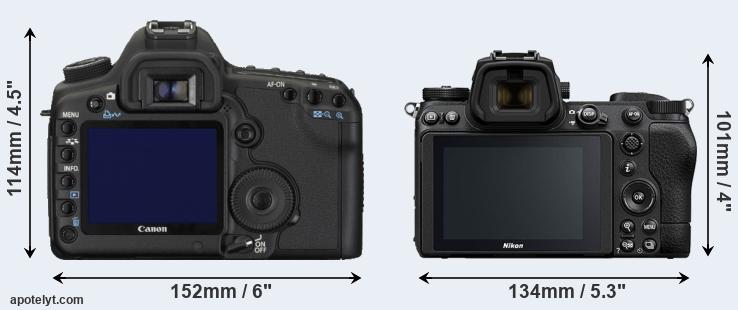
The resolution of the photographs recorded with the primary camera is determined by the number of megapixels available. A larger megapixel count indicates that the camera is capable of recording greater amounts of information. The megapixel count, on the other hand, is not the only factor that influences the overall quality of a photograph. 69 various specifications, the current market price, and DxO Mark ratings are used in our Decision Algorithm to dynamically rate cameras, allowing for a more objective and consistent comparison. When it comes to picking an interchangeable lens camera, the number of lenses offered is a major deciding factor.

Using Sports Nikon Z6 Mark II and Nikon D7500 as an Example
In order to take your camera about with you on a regular basis, you must consider the weight and volume of the camera. If you are especially interested in one or more of the categories covered in this section, we have ranked and compared the Nikon Z6 and Nikon D7500 for each of the five genres of photography covered in this section to make your choice process simpler. Nikon Z6 is equipped with a 25.0MP Full frame (35.9 x 23.9 mm) BSI-CMOS sensor and a variety of other capabilities. Expeed 6 processor is a high-performance CPU.
Pixel Area Z6 Ii (Z6 Ii Pixel Area)
Larger sensors are more effective since they have a larger surface area for capturing light than smaller sensors. When comparing digital cameras, the generation of the camera is also a crucial thing to consider. In addition to having sensors with quick readout periods for moving photos, the cameras under consideration have the same movie requirements (4K/30p).. The bigger the sensor, the more light is captured by the sensor, resulting in greater picture quality overall. Some lenses that offer autofocus do not have their own autofocus motor, but this will not create any issues with these two cameras since they have built-in autofocus motors.
Although it is just slightly greater than the highest picture resolution, which is often indicated on camera specs, it is still a significant improvement. The sensor resolution is utilized in the calculation of pixel pitch, pixel area, and pixel density. A camera sensor’s color depth, dynamic range, and low-light sensitivity are all evaluated by DxoMark, which also provides an overall score for the sensor. The Z6 has received a score of 95, which is nine points better than the D7500, which is the other camera in this comparison.

The Z6 II supports UHS-II cards (which can transfer data at speeds of up to 312 MB/s), but the D7500 can only utilize UHS-I cards (which can transmit data at speeds of up to 104 MB/s). Photographers who want to generate big reproductions of their images would benefit from cameras with higher effective ISOs, which are ideal for interior photography, night photography, and indoor sports photography. However, we have substantial sample images as well as a hands-on report on the Nikon Z6 II, which we will complete when we have time. A raw image file comprises data from the image sensor that has been processed to the bare minimum. Raw files are so titled because they have not yet been processed, and as a result, they are not ready to be printed or modified using a bitmap graphics editor at this time. The addition of more microphones improves sound quality and allows the gadget to filter out background noise more effectively.

